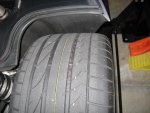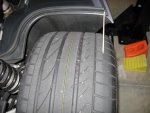Size matters.
From my observations at the Texas Mile, this is incorrect. A couple of our members appeared to be sitting on significantly bigger balls and they went a lot faster than the rest of us!
Chip
.....This is a simple physics problem. It is the same as if you sat on different size balls, it doesn't matter how big the balls are.......
From my observations at the Texas Mile, this is incorrect. A couple of our members appeared to be sitting on significantly bigger balls and they went a lot faster than the rest of us!
Chip



